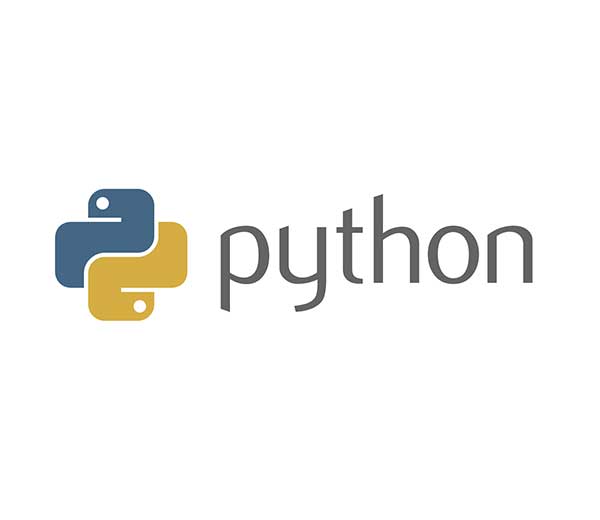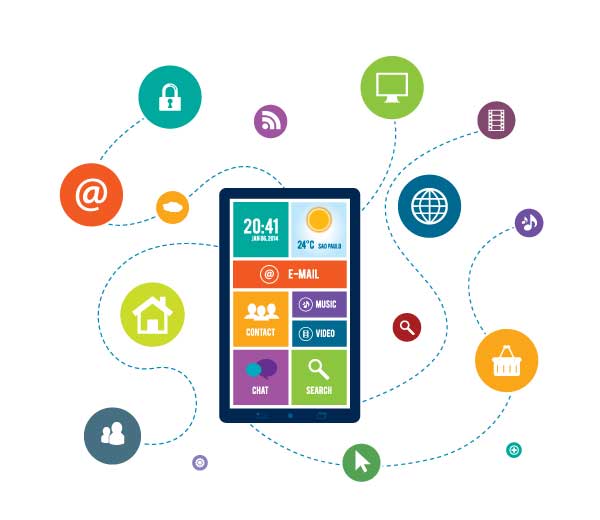
Python for Everybody Specialization
Python is a widely used high-level, general-purpose, interpreted, dynamic programming language. Its design philosophy emphasizes code readability, and its syntax allows programmers to express concepts in fewer lines of code than would be possible in languages such as C++ or Java. The language provides constructs intended to enable clear programs on both a small and large scale.
Python supports multiple programming paradigms, including object-oriented, imperative and functional programming or procedural styles. It features a dynamic type system and automatic memory management and has a large and comprehensive standard library.
Python interpreters are available for many operating systems, allowing Python code to run on a wide variety of systems. Using third-party tools, such as Py2exe or Pyinstaller, Python code can be packaged into stand-alone executable programs for some of the most popular operating systems, so Python-based software can be distributed to, and used on, those environments with no need to install a Python interpreter.
CPython, the reference implementation of Python, is free and open-source software and has a community-based development model, as do nearly all of its variant implementations. CPython is managed by the non-profit Python Software Foundation.
The main Python implementation, named CPython, is written in C meeting the C89 standard. It compiles Python programs into intermediate bytecode, which is executed by the virtual machine. CPython is distributed with a large standard library written in a mixture of C and Python. It is available in versions for many platforms, including Windows and most modern Unix-like systems. CPython was intended from almost its very conception to be cross-platform.
PyPy is a fast, compliant interpreter of Python 2.7 and 3.2. Its just-in-time compiler brings a significant speed improvement over CPython. A version taking advantage of multi-core processors using software transactional memory is being created.
Stackless Python is a significant fork of CPython that implements microthreads; it does not use the C memory stack, thus allowing massively concurrent programs. PyPy also has a stackless version.
MicroPython is a lean, fast Python 3 variant that is optimised to run on microcontrollers.
Other just-in-time compilers have been developed in the past, but are now unsupported:
Google began a project named Unladen Swallow in 2009 with the aims of speeding up the Python interpreter by 5 times, by using the LLVM, and of improving its multithreading ability to scale to thousands of cores.
Psyco is a just-in-time specialising compiler that integrates with CPython and transforms bytecode to machine code at runtime. The emitted code is specialised for certain data types and is faster than standard Python code. In 2005, Nokia released a Python interpreter for the Series 60 mobile phones named PyS60. It includes many of the modules from the CPython implementations and some added modules to integrate with the Symbian operating system. This project has been kept up to date to run on all variants of the S60 platform and there are several third party modules available. The Nokia N900 also supports Python with GTK widget libraries, with the feature that programs can be both written and run on the target device.
There are several compilers to high-level object languages, with either unrestricted Python, a restricted subset of Python, or a language similar to Python as the source language:
JPython compiles into Java byte code, which can then be executed by every Java virtual machine implementation. This also enables the use of Java class library functions from the Python program.
IronPython follows a similar approach in order to run Python programs on the .NET Common Language Runtime.
The RPython language can be compiled to C, Java bytecode, or Common Intermediate Language, and is used to build the PyPy interpreter of Python.
Pyjamas compiles Python to JavaScript.
Shed Skin compiles Python to C++.
Cython and Pyrex compile to C.
A performance comparison of various Python implementations on a non-numerical (combinatorial) workload was presented at EuroSciPy
Python?s development is conducted largely through the Python Enhancement Proposal (PEP) process. The PEP process is the primary mechanism for proposing major new features, for collecting community input on an issue, and for documenting the design decisions that have gone into Python. Outstanding PEPs are reviewed and commented upon by the Python community and by Van Rossum, the Python project?s benevolent dictator for life.
Enhancement of the language goes along with development of the CPython reference implementation. The mailing list python-dev is the primary forum for discussion about the language?s development; specific issues are discussed in the Roundup bug tracker maintained at python.org. Development takes place on a self-hosted source code repository running Mercurial.
CPython?s public releases come in three types, distinguished by which part of the version number is incremented:
Backwards-incompatible versions, where code is expected to break and must be manually ported. The first part of the version number is incremented. These releases happen infrequently?for example, version 3.0 was released 8 years after 2.0.
Major or ?feature? releases, which are largely compatible but introduce new features. The second part of the version number is incremented. These releases are scheduled to occur roughly every 18 months, and each major version is supported by bugfixes for several years after its release.
Bugfix releases, which introduce no new features but fix bugs. The third and final part of the version number is incremented. These releases are made whenever a sufficient number of bugs have been fixed upstream since the last release, or roughly every 3 months. Security vulnerabilities are also patched in bugfix releases.
Many alpha, beta, and release-candidates are also released as previews, and for testing before final releases. Although there is a rough schedule for each release, this is often pushed back if the code is not ready. The development team monitors the state of the code by running the large unit test suite during development, and using the BuildBot continuous integration system.
The community of Python developers has also contributed over 72,000 software modules (as of January 2016) to the Python Package Index (PyPI), the official repository of third-party libraries for Python.
The major academic conference on Python is named PyCon. There are special mentoring programmes like the Pyladies.
Python For Beginners
Welcome! Are you completely new to programming? If not then we presume you will be looking for information about why and how to get started with Python. Fortunately an experienced programmer in any programming language (whatever it may be) can pick up Python very quickly. It?s also easy for beginners to use and learn, so jump in!
Installing Installing Python is generally easy, and nowadays many Linux and UNIX distributions include a recent Python. Even some Windows computers (notably those from HP) now come with Python already installed. If you do need to install Python and aren?t confident about the task you can find a few notes on the BeginnersGuide/Download wiki page, but installation is unremarkable on most platforms.
Learning Before getting started, you may want to find out which IDEs and text editors are tailored to make Python editing easy, browse the list of introductory books, or look at code samples that you might find helpful. There is a list of tutorials suitable for experienced programmers on the BeginnersGuide/Tutorials page. There is also a list of resources in other languages which might be useful if English is not your first language.
The online documentation is your first port of call for definitive information. There is a fairly brief tutorial that gives you basic information about the language and gets you started. You can follow this by looking at the library reference for a full description of Python?s many libraries and the language reference for a complete (though somewhat dry) explanation of Python?s syntax. If you are looking for common Python recipes and patterns, you can browse the ActiveState Python Cookbook.
Looking for Something Specific?
If you want to know whether a particular application, or a library with particular functionality, is available in Python there are a number of possible sources of information. The Python web site provides a Python Package Index (also known as the Cheese Shop, a reference to the Monty Python script of that name). There is also a search page for a number of sources of Python-related information. Failing that, just Google for a phrase including the word ?python? and you may well get the result you need. If all else fails, ask on the python newsgroup and there?s a good chance someone will put you on the right track.
This Specialization builds on the success of the Python for Everybody course and will introduce fundamental programming concepts including data structures, networked application program interfaces, and databases, using the Python programming language. In the Capstone Project, you?ll use the technologies learned throughout the Specialization to design and create your own applications for data retrieval, processing, and visualization.
Programming for Everybody (Getting Started with Python)
This course aims to teach everyone the basics of programming computers using Python. We cover the basics of how one constructs a program from a series of simple instructions in Python. The course has no pre-requisites and avoids all but the simplest mathematics. Anyone with moderate computer experience should be able to master the materials in this course. This course will cover Chapters 1-5 of the textbook ?Python for Informatics?. This course is equivalent to the first half of the 11-week ?Programming for Everybody (Python)? course. Once a student completes this course, they will be ready to take more advanced programming courses.




